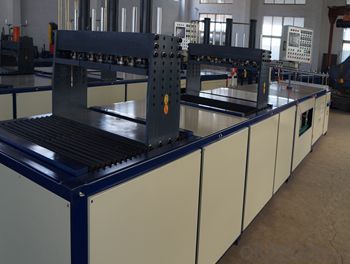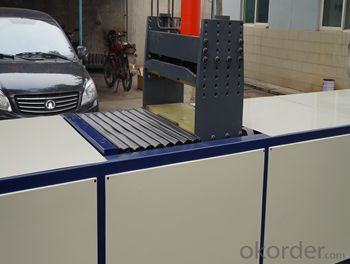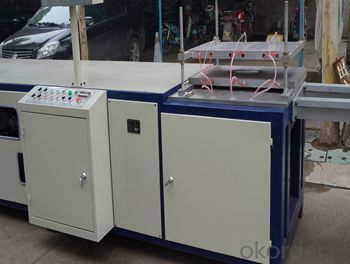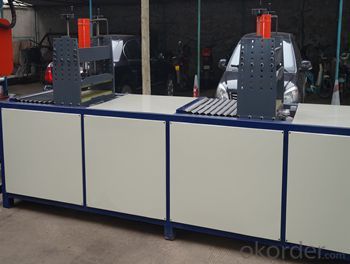Loading Port:Qingdao
Payment Terms:TT OR LC
Min Order Qty:1 set
Supply Capability:31 set/month
Hydraulic FRP Profile Machines with High Quality
Product Description:
Hydraulic type pultrusion machine is controlled by PLC, which adopts hydraulic pressure type to-and-fro as traction force with pneumatic length-fixing cutting.
Product Features:
1. The machine adopts auto PLC controlling with stable performance and high automation.
2. The machine provides high precision temperature control system. The measurement and control of temperature is accurate with tolerance less than 1℃.
3. Temperature alarm device, the temperature of hydraulic system is under strict control.
4. we can design various shape moulds according to customer’s requirements.
Product Parameter:
Name | Hydraulic FRP Profile Pultrusion Machines with High Quality Hydraulic |
Brand | CMAX |
Weight | 9.8T |
Dimension(L*W*H) | 8.6M*2.5M*5.5M |
Power | 30KW |
Voltage | 760V 50HZ |
Product Type | FRP Machinery |
Certification | ISO9001:2008 |
Appilication | Profile |
Raw material | Fiber Reinforced Plastic |
Place of Origin | Beijing, China (Mainland) |
Color | Selectable |
Warranty | 1 Year |
Time of Delivery | 30-45 days |
Product Pictures:




FAQ:
Question 1 : What is Pultrusion?
Answer : Pultrusion is a continuous low pressured molding process using fiber reinforcements and thermosetting resins matrices. The fiber reinforcements are drawn through resin bath or injected with resin in which all fibers are thoroughly impregnated with the liquid resin system. The wet-out fiber is formed to the desired geometric shape and pulled into a heated steel die. Once inside the die, the resin cure is initiated by controlling at precise elevated temperatures. The composite laminate solidifies in the exact cavity shape of the die, as it is continuously "pulled" by the Pultrusion machine, thus getting the name - Pultrusion.
Question 2 : Can any shape be pultruded?
Answer : Virtually any constant cross section can be pultruded dependant upon wall thickness and complexity of the cross section of the profile.
Question 3 : What are the most typical reinforcements used in the Pultrusion process?
Answer : Typical reinforcements used are fiberglass roving, continuous strand mat, woven and stitched fabrics. Other reinforcing materials such as basalt fiber, carbon and aramid fibers, which are more costly, can be utilized during the Pultrusion process to increase the modulus / stiffness of the composite member.